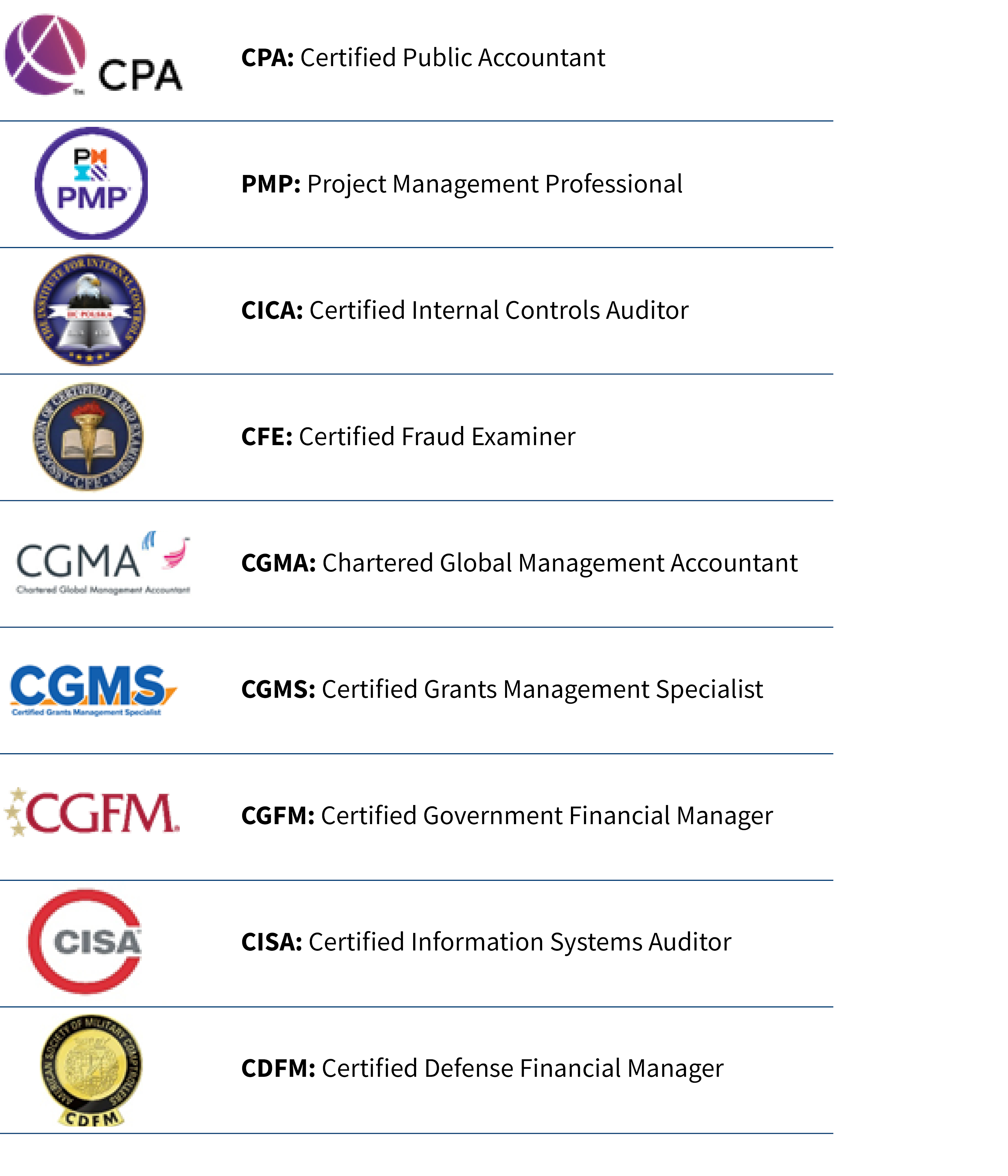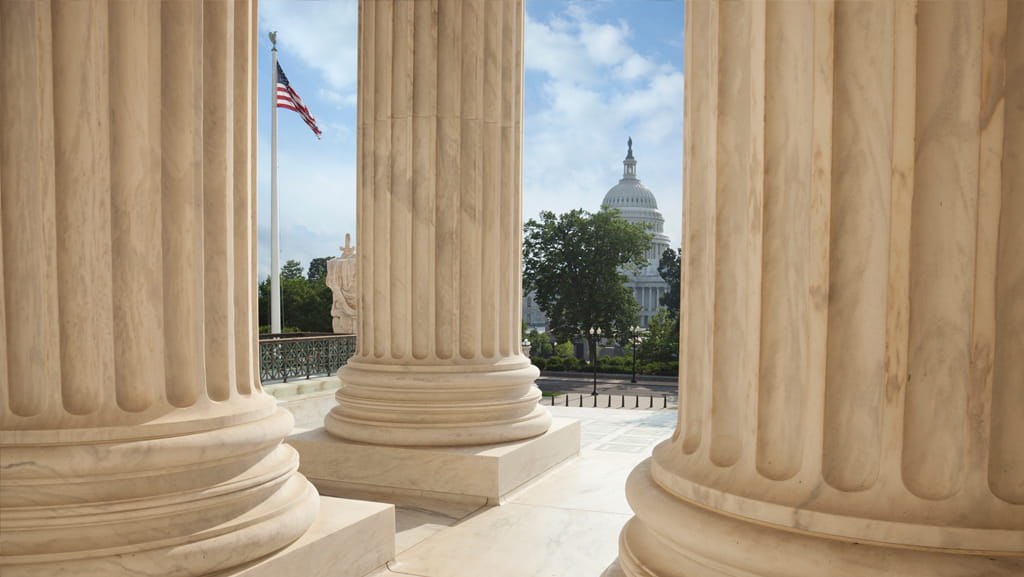Our solutions are tailored to each client’s strategic business drivers, technologies, corporate structure, and culture.
Safeguarding public funds efficiently
We deliver cost-effective strategies through four primary solutions: (1) government audit and financial management; (2) compliance & monitoring; (3) emergency management; and (4) program and project management. Clients also benefit from our suite of world-class advisory services including, technology and data, rapid response, cybersecurity, technology, and more.
Additionally, we are uniquely poised to assist clients with numerous federal funding programs such as FEMA Public Assistance, FEMA BRIC, HUD CDBG-DR MIT, FEMA Hazard Mitigation Assistance grants, U.S. Treasury Emergency Rental Assistance Program, CARES Act, American Rescue Plan Act (ARPA), Infrastructure Investment and Jobs Act (IIJA), and more. Our nimble team is also prepared to assist agencies with programs related to timely issues including asylum seeker programs and opioid settlement funding.
Government audit and accounting
Navigating the complex web of federal (FASAB) and state (GASB) accounting standards, financial regulations, and information system auditing standards, our extensive team of Yellow Book trained professionals conducts more than 1,200 financial statement, performance, operational, contract, and improper payment audits each year.
Contract Audits
In conjunction with our Government Contracting practice, we provide contract audit services to civilian agencies in the three major required areas: incurred cost proposals, pricing proposals, and contractor business systems
Compliance, monitoring, and oversight
When government entities are funding projects, whether to build infrastructure, support grant initiatives, or facilitate recovery from disasters and emergencies, our compliance and monitoring professionals help ensure that funds are used as intended and help mitigate fraud, waste, and abuse. Learn more.
Grants Management and Administration
Identifying, obtaining, and administering grant funding is a complex, multi-step process that requires knowledge of complex 2 CFR 200 regulations. As a result, it can be difficult for state and local governments to create efficient programs and maximize funding. CohnReznick’s grants management and administration team is well-versed in all aspects of grants management and administration, and is dedicated to helping government agencies simplify the process and maximize results to speed funding to those in need.
Technology & Data Services for Government Agencies
Big data has become integral to federal, state, and local agencies, but it requires the ability to use advanced data processing and analytic technologies to effectively leverage data-driven decision making (DDDM) and meet mission critical goals. CohnReznick can help you define, implement, and manage your data and analytics program to meet agency-specific needs. We align the people, processes, and technology systems of government agencies and programs to increase productivity, efficiency, transparency, and ensure compliance. Learn more.
Program and project management
CohnReznick’s advisors help the public sector and government agencies address complex issues by providing practical, proven, and cost-effective project management solutions that allow organizations to focus on their mission and achieve more. Learn more.
Doing business with us and certifications
DUNS: 06-7510214
CAGE Code: #58QY4
GSA Professional Services Schedule (PSS) Special Item Number (SIN) to meet client needs:
CohnReznick is qualified in many GSA schedule categories to meet client needs including:
C520-5 Loan Servicing & Asset Management
C520-7 Financial & Performance Audits
C520-8 Complementary Audit Services
C520-11 Accounting
C520-12 Budgeting
C520-13 Complementary Financial Management Services
C520-15 Outsourcing Recurring Commercial Activities for Financial Management Services
C874-1 Integrated Consulting Services
C874-6 Acquisition Management Support
C874-7 Integrated Management Support
CohnReznick’s professionals hold many certifications that allow us to provide specialized expertise for client engagements.

Infrastructure Advisory
Managing the scale of the pending infrastructure plan will challenge your program management processes, systems, and resources. We will help you analyze and address program management resource gaps, provide compliance and monitoring solutions, and help agencies drive jobs and economic growth.

Frank Banda
Contact
Let’s start a conversation about your company’s strategic goals and vision for the future.
Please fill all required fields*
Please verify your information and check to see if all require fields have been filled in.












